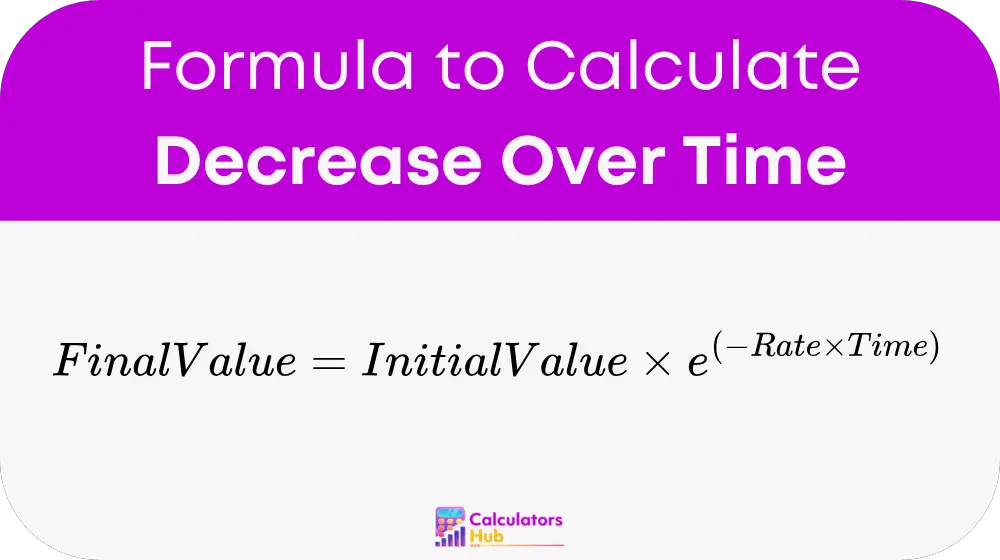A Decrease Over Time Calculator helps users determine how a quantity declines over a period. This tool is widely used in finance, science, economics, and business to measure the rate at which values decrease, such as dépréciation, population decline, investment losses, and natural decay processes.
En calculant le rate of decrease, users can predict future values, make informed decisions, and plan strategies for mitigating losses or managing resources efficiently.
Formula for Decrease Over Time Calculator
The exponential decrease formula is used to determine the final value of a quantity after a period of decline:

Où :
Initial Value = Starting amount
Rate = Decay or decrease rate per unit time
Time = Time elapsed
e = Euler’s number (≈ 2.718)
This formula helps model continuous decrease trends, qui sont courants dans investment depreciation, désintégration radioactive, and resource depletion.
Decrease Over Time Reference Table
The table below provides estimated decrease values for different scenarios, assuming an initial value of 1,000 et 5% annual decrease rate over various time periods.
| Temps (années) | Decrease Rate (5%) | Valeur restante |
|---|---|---|
| 1 | 5% | 950 |
| 5 | 5% | 773 |
| 10 | 5% | 599 |
| 15 | 5% | 464 |
| 20 | 5% | 359 |
This table shows how an initial value of 1,000 decreases over time, suite à un consistent decline pattern.
Example of Decrease Over Time Calculator
A company has 10,000 units of raw materials, and the stock depletes at a 7% annual rate. The company wants to estimate the remaining stock after 8 years.
Initial Value = 10,000
Rate = 7% (0.07)
Durée = 8 ans
Application de la formule :
Final Value = 10,000 × e^(-0.07 × 8)
Final Value = 10,000 × 0.5712 = unités 5,712
This means that after 8 years, the company will have approximately 5,712 units remaining.
FAQ les plus courantes
The exponential formula accounts for continuous decrease, while simple percentage reduction assumes a fixed decline each period without compounding effects.
Yes, it is commonly used for investment depreciation, loan balances, and asset value reduction over time.
A higher rate means the value declines faster. For instance, a 10% decrease rate will result in a steeper decline compared to a 2% rate, leading to a much lower remaining value in the same period.